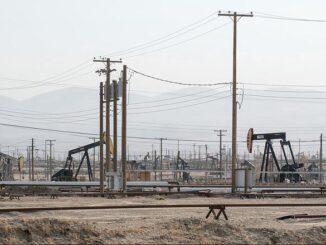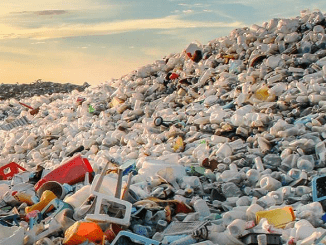At a time of mounting climate threats and resource scarcity, technology emerges as a powerful force for reimagining how we care for our planet. Can digital transformation meaningfully reverse or slow environmental degradation—and if so, how? This article explores that question, looking at the real-world impact of digital tools in cutting emissions, optimizing resource use, and improving the way we monitor and protect our environment. Advances once confined to science fiction are now accessible to businesses, governments, and consumers, creating new pathways for positive environmental change.

The Role of Digital Transformation in Environmental Protection
Digital transformation refers to the integration of digital technologies across all areas of business and society, fundamentally changing how organizations operate and deliver value. In the context of environmental sustainability, it provides a comprehensive toolkit for tackling complex ecological challenges.
These digital solutions enable us to:
- Collect vast amounts of environmental data in real time, supporting better decision-making
- Automate resource management, reducing waste and boosting efficiency
- Detect and respond to emerging environmental threats faster than ever
The urgency is clear. According to the Intergovernmental Panel on Climate Change (IPCC), global emissions must decline by nearly half by 2030 to avoid the worst impacts of climate change. Experts warn that incremental efforts will not suffice—adopting digital innovations at scale is now essential to protect both people and the planet.
The entertainment sector, particularly casinos, has been particularly successful in the field of digitalization. Many of them have already moved online and only accept players via the internet. This has reduced harmful emissions into the environment and lowered their carbon footprint. There is a fairly large selection of online casinos today, and thanks to information websites, virtually every user can get now an up-to-date list of licensed platforms.
Cutting Emissions in Transportation and Logistics
Transportation remains one of the largest contributors to greenhouse gas emissions worldwide. The US Environmental Protection Agency (EPA) reported that in 2020, the sector accounted for about 27% of total US emissions, with road vehicles, aviation, and shipping as major sources. Digital transformation is helping to reshape this landscape on multiple fronts.
Electric Vehicles (EVs): The shift to EVs represents a cornerstone of cleaner transportation. Major companies like Amazon, UPS, and FedEx are converting their delivery fleets to electric, encouraged by government incentives such as the US federal tax credit of $7,500 per new EV. EVs not only reduce tailpipe emissions but also lower operating costs and improve brand reputation among eco-conscious consumers.
Route Optimization: Advances in digital logistics have made route planning far more efficient. Platforms like Google Maps, Waze, and specialized tools for freight operators analyze traffic patterns and suggest optimal routes. These systems minimize delays, reduce fuel consumption, and improve delivery times, all while shrinking the sector’s carbon footprint.
Remote Work: The pandemic demonstrated the environmental benefits of telecommuting. Secure cloud platforms and digital collaboration tools allow employees to work effectively from home, lessening daily traffic and associated emissions. A 2021 study in the “Nature Communications” journal estimated that sustained remote work could lower US transportation emissions by up to 10%.
Employing these strategies brings substantial cost savings, reduces reliance on fossil fuels, and can even open doors to public and private sustainability incentives.
Reducing Resource Waste through Automation and Accuracy
Automation lies at the heart of digital efficiency. By removing manual errors and streamlining processes, digital tools help industries conserve resources and avoid waste.
Digital Inventory Management: Supermarkets, warehouses, and retailers increasingly use real-time scanning and tracking systems. These prevent over-ordering, minimize spoilage (especially for perishables), and cut down on unnecessary shipments.
Automated Assembly and Blockchain: In manufacturing, automated processes and blockchain-based tracking reduce product defects and ensure supply chain transparency. Fewer defective goods mean less waste from returns and remanufacturing, which in turn curbs emissions from repeated shipping.
Construction and Healthcare: Construction sites now employ digital safety monitoring and environmental sensors to prevent accidents such as chemical spills. In healthcare, precision-guided surgeries using digital tools reduce disposable waste and minimize the need for repeat procedures.
These solutions deliver dual benefits: they save companies money and drastically cut the unnecessary consumption of energy and materials.
Leveraging Technology for Environmental Monitoring and Cleanup
Environmental monitoring has been transformed by innovations in drones and remote sensing technology.
Ocean Plastic Cleanups: Drones equipped with cameras and sensors are deployed to detect, map, and collect floating plastic patches in oceans. Projects like The Ocean Cleanup use autonomous vessels and drone support to remove tons of debris, with measurable improvements in pilot zones.
Disaster Prevention: Remote sensing platforms provide early detection of environmental threats. For example, they can identify nutrient runoff from farms that could lead to algal blooms or pollution events. Early warnings allow time to reinforce barriers or modify practices, averting disaster before it strikes.
Peer-reviewed studies and projects backed by organizations such as the United Nations Environment Programme have highlighted the effectiveness of these technologies in both surveillance and direct intervention.



